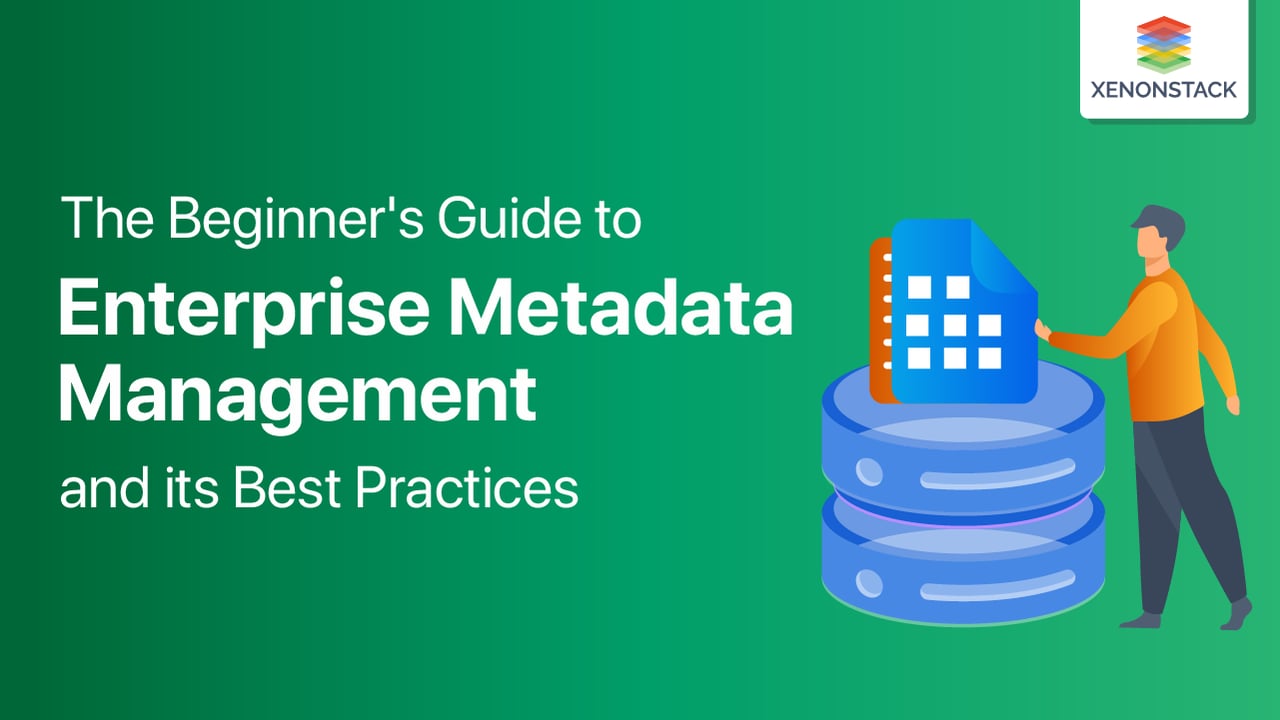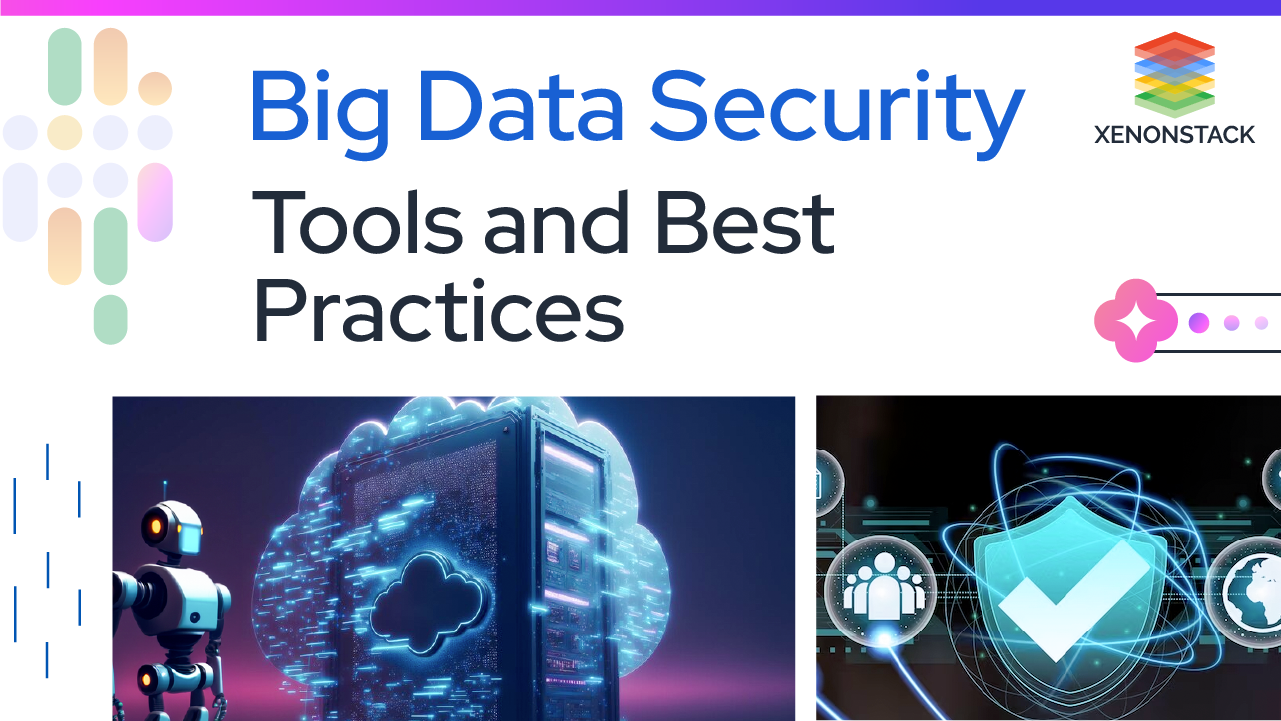
Introduction to Enterprise Metadata Management
Metadata helps your organization understand its data assets in today's data-driven world. And, as noted by top analysts, the more valuable the item, the more significant it is. The problem is that your Metadata is all over the place. Your sources of data, data management tools, and data-driven applications all contain it. How can you put these elements together to maximize the value of it?
GCP Data Catalog is rapidly taking over the metadata management services, availability being on the google cloud. Click to explore about our, GCP Data Catalog
Managing challenges of Enterprise Metadata Management
Let's take a step back and define it before discussing why we need it and the significance of it for Business Users.
Jack E. Myers first used it for his Metamodel product line in 1969. The most common definition of the phrase "Data about data," quickly gained acceptance and found use in the computer world.
To be truly effective, it must be complete, resilient, and go beyond specifying data.
- Who was the asset's maker?
- What does the asset mean in a commercial context?
- What location is the asset kept?
- What justifies its storage?
- When did the asset get its start?
- What format does the asset use?
In general, there are three different categories of it. Both manual and automatic creation methods are available. Performing its governance in Data Lake may provide businesses with the following difficulties:
Lack of a shared repository - It isn't easy to find a single repository that contains all of the environment's Metadata.
No usage of business terminology - Information consistency across many channels becomes challenging for business users and IT.
'Who' & 'What' - We must identify who is responsible for what environmental actions and maintain responsibility.
Impact Analysis - The IT team has to put in a lot of work to analyze the effects of proposed changes and recognize cross-table relationships.
Maintaining rules and inferences - Businesses find it challenging to maintain the rules and conclusions made by analysts.
Therefore, a self-service, scalable corporate solution that can address these issues at once is needed today.
What does EMM mean?
Gartner describes enterprise metadata management as the business discipline for managing it an organization's information assets. Information that "describes different aspects of an information asset to enhance its usability throughout its life cycle".
The practice of managing it, provides additional information and context to other information and data assets of an organization. It defines the various aspects of information assets, making them more usable and making administration easier throughout their existence. For instance, is the supplementary information that describes a particular document, such as the original author, the creation date, the changed date, or annotations that explain the document's purpose.
The primary reason driving the expansion of the worldwide corporate management market is the growing importance of data governance by companies across numerous industrial verticals. The other information collected is described, explained, and located using an organized information set. Information about information and data about data are other names for it.
The cataloging component of library materials in the context of library management. Managing the information within the company, it is a data management practice. The software solution offers the required information to manage and maintain the technical description of data assets better. It improves an organization's capacity to manage risk, increase IT productivity, and fulfill regulatory requirements.
A heavy dose of automation to the data catalog to collect meaningful information about the element imported into the solution. Click to explore about our, AWS Data Catalog
Benefits of Enterprise Metadata Management
The control and visibility provided by it are necessary to manage the change that frequently comes along with a complex business data environment. Users may observe the relationships and roles of it thanks to EMM and the numerous tools developed for it, which also manage data integration.
Enterprise Metadata Management ensures that it is effectively accessible, increasing the value of the data. Managing it through a central hub is frequently done by gathering and connecting it from various data sources.
EMM advantages include:
- By comprehending the fundamental meaning of information, from its actual content down to it, one may govern, integrate, and manage data more efficiently.
- Provides a comprehensive picture of enterprise data across the firm, which lowers risks and manages change by preventing mistakes and boosting regulatory compliance.
- Increases efficiency by allowing collaboration between technical and business partners and understanding the effects of specific data changes.
- Improves the data flow between several systems
- More excellent enterprise data asset governance is made possible.
- Enhances context-based information access
Best Tools for Enterprise Metadata Management
You can fully comprehend your data with the appropriate metadata management tools. They assist you in improving the relevancy and quality of your data. This enables you to realize its full business potential. With the expansion and distribution of data, it is critical to use it to:
- Find information
- comprehension of data relationships
- Monitor the use of the data
- Analyze the benefits and dangers of using data.
Tools for managing it give relevant context and insight into the digital assets kept throughout the organization, facilitating information discovery for non-technical users.
Today, centralized data management is even more critical due to the resurgence of first-party data collecting. Tools for managing it have become essential in an organization's technology stack. It is predicted that by 2026, the market for its management solutions will rise from its current size of $6.3 billion to $15.1 billion.
The following features may be present in some or all of the multifunctional metadata management solutions. Its collection and transformation:
Automated data discovery, creation of it and metatags for connected assets, and data transformation into user-friendly formats are all aspects of collecting it.
Metadata Repository
Data assets from various sources (data warehouses, cloud apps, data lakes, and more) are indexed in its repository, which powers your content taxonomy.
Business Glossary
A business lexicon is a list of data assets that include relationships between assets from various sources, correct business context, and exact definitions.
Data catalog
The data catalog is a repository that connects the location and physical data assets to the business definitions.
Data profiling
Profiling of data Knowing the structure, content, and connections to other data assets of it.
Data lineage
Data lineage, An outline of the data route, including any modifications made to support data reuse and auditing procedures
Impact analysis
Encourages data transparency to aid in evaluating how perspective changes may affect current business structures.
Taxonomy and classification of tags and content
To improve discoverability and regulatory compliance, your content management system (CMS) organizes data assets through tagging, content taxonomy, and classification.
The process of analyzing the data objects and their relationship to the other objects. Click to explore about our, Data Modelling Techniques and its Tools
Best Practices of Enterprise Metadata Management
Implementing procedures that guarantee it is available, searchable, and helpful throughout the company takes tremendous work. The first significant obstacle is knowing where to start. Here is a starting point guide:
Get the executives on board
Executive support is necessary for the enterprise-wide initiative of its management. Without it, you won't be able to acquire the resources required to guarantee success.
Most corporate executives know the value of data management and how it plays a part in achieving a competitive edge. Organizations frequently struggle to begin because of the metadata management component's complexity and size, not to mention the cultural shifts it necessitates.
Gaining support requires gathering data on the problems that good data management may help solve. Consider the following points:
- Challenges with keeping customers
- Team member turnover
- reduced sales
- marketing campaigns' failure
- You can proceed after securing executive sponsorship.
Establish a metadata admin team
You must have a committed team to create its management process and overarching strategy. Choose team members who are knowledgeable about the enterprise data landscape and have the ability to link its management approach to the organization's overarching data and business objectives.
Appointing its stewards to manage its governance and implement procedures and rules is also crucial. They will also be in charge of deciding on and using its management technology.
Create a metadata strategy
You must devise a plan to turn its collected and kept into a valuable resource for the company if you want to succeed. Consider the following while developing a its strategy:
- overall data objectives of the company
- The information needed to accomplish the objectives.
- How to gather it?
- Location of it?
- How to handle problems with the infrastructure or technology?
- How it will be accessible and stored?
- Who will be in charge of it upkeep?
Your organization's overall data democratization strategy is what this metadata approach ultimately achieves.
Adopt data standards and schemas
Data standards create a shared understanding of the data pieces to ensure practical usage and interpretation. Data assets are organized using it schemas to be readily helpful and accessible to all roles within the company. Both are necessary to extract the value from it that has been collected.
Deploy a metadata management tool
Although some firms still maintain information using spreadsheets, using a specialized its management application is vastly more productive (MDM tool).
More capable technologies enable its procedures, policies, and data governance needs while facilitating easy access to and storage of it, machine learning, and artificial intelligence-based collection and classification.
Rollout and monitor
It's time to roll out your approach to the rest of the company after best practices are in place and some compelling management use cases have been defined.
As the new strategy is implemented, it is crucial to regularly assess how well your entire strategy is working and make any necessary updates, enhancements, or adjustments.
What is the Enterprise Metadata Management (EMM) Global market?
The key factor driving the growth of its market is the expansion of enterprise data, which is coupled with increasing data integration and content management challenges, as well as the growing importance of data governance and data standardization by organizations across various industries.
Increased interest in managing the content lifecycle by businesses across various verticals, growing focus on collaboration and social networking capabilities, and growing need to reduce risk and boost trust in enterprise data assets are driving its market growth.
The growth of its management market is also fueled by the expansion of data warehouses, data mining, and data pooling operations, as well as an increasing emphasis on creating centralized data control to enhance IT productivity within organizational environments.
Yet, a lack of understanding about the potential advantages of its management solutions and technical difficulties with its storage and data cross-linking are recognized as barriers to its growth of it.
A structure that defines the logical view of the entire defines how the data is managed and how the relations among them are associated. Click to explore about our, Types of Databases with Benefits and Use Cases
Enterprise Metadata Management Market Segments
The global enterprise metadata management market is divided into regions, verticals, and deployment types. The global market for its management is divided into on-premises and software as a service based on the method of deployment (Saada).
The BFSI, healthcare & medical, IT & telecommunication, media & entertainment, government, e-commerce and retail, logistics, pharmaceutical, manufacturing, and others segments make up the worldwide management market on a vertical basis.
Regional Outlook
Due to the presence of well-known firms with expertise in its management in the region and the region's preference for collaborative work environments, North America is predicted to lead all other regions in its market.
Due to rising enterprise and ongoing adoption of business intelligence and analytics solutions by companies across all industries, Asia-Pacific has the fastest-growing network forensics market in revenue.
Competition Landscape
Oracle, Informatica LLC., International Business Machines Corporation, Teradata, Collibra, Adaptive, Inc., Data Advantage Group, Cambridge Semantics, Talend, and MuleSoft, INC. are a few of the leading companies in the global corporate metadata management market.
Conclusion
To implement metadata management, all three levels of it must be consistently collected, stored, and managed. Search, navigation, and drill-down are all supported by the linking of it between layers and top-level domains (such as clients, suppliers, or items). Processes govern all term modification, review, validation, and certification levels. To ensure high quality at all levels, you also require enterprise-level policy management. It increases productivity, fosters innovation and teamwork, and reduces risk. Additionally, it makes it possible for data citizens to gain access to reliable, high-quality data, guaranteeing that they use the correct information to produce insightful reports.
- Explore about Best Practices of Enterprise Metadata Management
- Discover more about the Architecture of Master Data Management
- Read more Data Engineering Managed Services for Digital Operations


